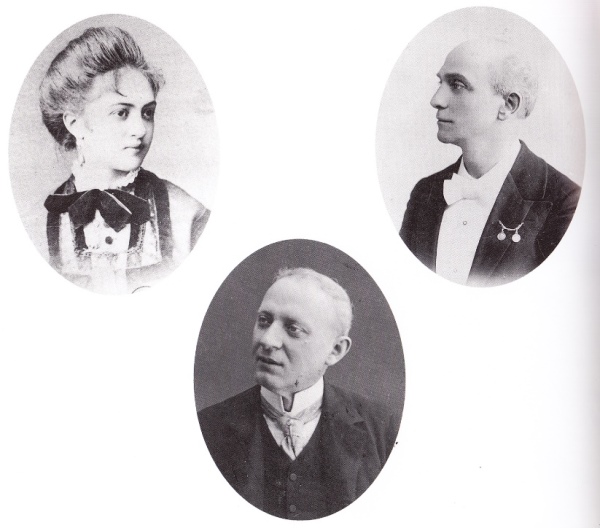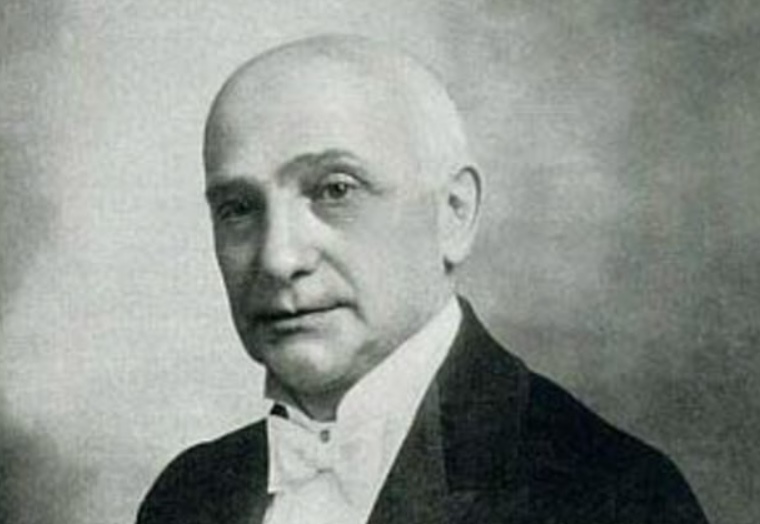Premier Danseur Enrico Cecchetti is one of the most important figures in modern classical ballet, especially among the males. Aside from being a prominent dancer, he was also widely acclaimed as a teacher with excellent students.
It would not be an exaggeration to say Cecchetti was literally and figuratively born for the theater. Today, I will have a deeper look into his journey.
Table of Contents
Enrico Cecchetti’s Family
The connection between Cecchetti and the ballet world has been formed ever since the moment he came to this life.
His father, Cesare Cecchetti, was Premier Danseur and Ballet Master, while his mother, Serafina Casagli, was Prima Ballerina.
Much more magically, he was born at Tordinona the theater, right in Serafina’s dressing room.
Even as a young child, Cecchetti had the chance to go on tour with his talented parents. At 5 years old, he debuted with Il Jocatore by Giuseppe Rota and soon grew determined to become a professional dancer.
Enrico Cecchetti has two siblings, Pia and Guiseppe. At the dawn of his career, he partnered with Pia and sometimes still performed with his family members in his adulthood.

Being a sought-after performer, Cecchetti usually tried to include Pia in the contract with him until she started her family and retired from being a dancer.
Enrico Cecchetti’s Spouse
Cecchetti fell in love with Giuseppina de Maria, a ballerina, and proposed to her, though her father didn’t approve of their relationship.
The couple eloped to Berlin and married in 1878. The marriage lasted until her last breath, and her passing away was a wound he could never heal from.
Throughout their marriage, Cecchetti wasn’t one bit embarrassed to refer to Giuseppina as the love of his life. They had five sons, three of whom pursued a dance career, while the oldest son proudly stood as a lawyer.
However, despite having such a beautiful love story, the couple still suffered a tragic loss when two of their children died as soldiers serving in the Great War.
Enrico Cecchetti’s Early Years
Cecchetti’s career as a dancer started as early as 5 years of age.
Roughly two years later, the senior Cecchetti joined the Italian troupe to perform for the opening of the Philadelphia Academy of Music, and the young Cecchetti got his American debut.
Most people wouldn’t have expected Cecchetti’s parents to disapprove of his desire to become a professional ballet dancer after they finished the American tour. They even sent him to a private school and hoped he would take law or business as his career.
Cecchetti didn’t oppose them, yet he poured all his spare time and energy into dancing and eventually convinced his parents to change their minds.
His first teacher was Giovanni Lepri, one of the most accomplished students of the famed theorist & instructor Carlo Blasis. During his three years at the academy, Cecchetti was always a top student and his formal debut at 16 years old.
It’s quite important to note that Cecchetti’s flair for teaching started showing this early, earning him the nickname “maestro” from schoolmates who asked for his instruction.
The Way To Become A Professional Dancer
At St. Petersburg
The 20-year-old Cecchetti had a grand premiere as La Scala’s first dancer.
At first, his fall seemed much too dislikable for the audience, but the nonpareil 32-pirouette sequence soon convinced them otherwise. Many renowned companies in Europe began to flock to Cecchetti.
After his sister Pie retired, Cecchetti moved on and partnered with the top-tier ballerinas in Italy. His name during this phase was closely attached to St. Petersburg, especially with the inspiration he took and poured into the ballet La Ciociara.
Following the success of his first attempts at choreography, Cecchetti was further motivated to bring his ideas to life, balancing between traditional techniques and personal modifications.
Along with creating new works, his talent for mime also unraveled.
“First Dancer of the World”
The many changes in Cecchetti’s career were associated with the extravagant production of Excelsior. As his London debut, it brought countless praise to him, yet the financial aspect of the ballet was utterly awful.
Once he returned to Italy, Cecchetti re-produced Excelsior and assigned the principal role to his wife while starting to teach students and select some of the most standout individuals.
When he was back in St. Petersburg, Excelsior was once again staged, but with him as the principal dancer and Giuseppina as the mime. It was critically acclaimed, a new achievement in Cecchetti’s career.
The next years of Cecchette’s life were spent with esteemed companies such as the Russian Imperial Ballet and the Empire Theatre in London, for which he was the principal dancer and second ballet master.
After the exceptional performance in The Sleeping Beauty, Cecchetti’s technique was eulogized on an international scale. The next time he returned to London after this grand hit, they billed him “First Dancer of the World”.
Check more: August Bournonville Biography, Life, Ballet Contribution & More
Enrico Cecchetti Famous Performances
The performance that is written in ballet history and always mentioned in Cecchetti’s name is Tchaikovsky’s Sleeping Beauty (1890).
Cecchetti played both the Fairy Carabosse (the mime) and the Bluebird (the classical). The moves he performed for this ballet were recognized as heavily technical and highly challenging.
Another remarkable milestone for him was the debut stage at La Scala when he was only 20 years old, where he fell back flat at first and then turned the table with his unparalleled ala seconde of 32 pirouettes.
Excelsior is another ballet attached to Cecchetti’s career, as it went from a financial disaster in London (1885) to a new peak of fame for him when produced in Italy (1887).
Some of his other notable performances and choreographers and dancers are Eunuch (Scheherazade, 1919), Kostchei (The Firebird, 1910), and the Magician (Petrushka, 1911).
Enrico Cecchetti as a Ballet Teacher
Traditionally, ballet techniques are taught directly from one person to another. And if we trace back in time from Enrico Cecchetti to his teacher and so on, we would be taken to the first ballet master ever, in the time of King Louis XIV.
During the 1887 – 1902 era, Cecchetti was a teacher at the Imperial School (St. Petersburg), established as a foremost ballet instructor.
In 1902 – 1905, he taught at the Warsaw State School (Poland) and eventually opened a school under his name. By this time, the whole ballet field had accepted Cecchetti as the greatest virtuoso in his craft.
The beginning of the 19th century came with the appearance and popularization of pointe shoes, which reduced the role of male dancing in ballet to a kind of servant for the ballerinas using pointe techniques.
Cecchetti countered the trend with modifications to the male choreography in conservative roles and defined the role of male dancers again.
For a short span of two years, Cecchetti only trained Anna Pavlova according to her request, but his Mariinsky students were deeply interested and enthusiastic about attending his classes again. They were even willing to skip tours to not miss his lessons.
Seeing his ability and influence on the dancers, Sergei Diaghilev, the founder of Ballets Russes, was quick to recruit Cecchetti as both Ballet Master and Mime for his company.
True to his observation, Cecchetti successfully set the foundation stones for modern classical ballet.
After being burnt out from tours, Cecchetti settled in England and returned to his teaching career, and nearly – if not all – dancers wanted to learn from him.
At some point, people shared the belief that a ballet dancer must receive Cecchetti’s instruction to become an actual professional.
Although he was in his late sixties and thus had to keep his appearance limited, he didn’t stop training and launching some remarkable names in contemporary ballet.
His famed method was also documented and published during this time as a two-volume edition: Vol. 1 is “The Theory and Practice of Classical Theatrical Dancing” and Vol. 2 is “The Theory and Practice of Allegro in Classical Ballet”.
Cecchetti came back to Italy with a retirement plan in mind, but the offer to teach at La Scala was a lifetime dream that he couldn’t turn down. From 1923 until he passed away in 1928, his teaching career was attached to La Scala.
The Cecchetti Method
Without a doubt, the Cecchetti method is one of the most important legacies of Cecchetti. Its main purpose was to fully develop each dancer’s skills without abandoning flexibility and strength, and it is still a common method in many dance companies.
The figure inspiring this method was the ballet master Carlo Blasis whose rigorous principles are very well-known.
Some of his students were Cecchetti’s teachers, so the Cecchetti method inevitably took after Blasis’ philosophy: the dancer must be a virtuoso in techniques and understand each movement’s theory, which shall be acquired from strict and intensive training.
The influence of Cecchetti himself on the method was by no means trivial, though. The elements in his style and training were all fused from his experience as a dancer.
Before Cecchetti, ballet teachers let their preferences seep into their lessons, but his method standardized ballet teaching as we see it today.
The first students to whom this method was passed became outstanding dancers among their generations: Anna Pavlova, George Balanchine, and Alicia Markova are only a few names.
Many of Cecchetti’s students also taught the same method, and renowned schools incorporated it in their programs.
In 1922, the Cecchetti method was documented in print, which became a worldwide resource for anyone following this method until these days. Its theories and practices were undoubtedly replicated and included in different forms.
In modern ballet training, the system of Cecchetti examinations is widely applied to evaluate the students’ achievements after providing them with essential skills.
Enrico Cecchetti’s Awards
Despite being a renowned dancer, choreographer, and teacher of his time, the historical context wasn’t the most ideal for awards. Hence, the information of awards given to Cecchetti is extremely rare and near zero.
What we are sure about is that he had constantly been assigned to high-ranked positions, from First Dancer, Premier Danseur, Ballet Master, to Director.
He also created and left behind a grand legacy with his teaching methods, which are still widely applied in ballet schools and companies.
His students are successful and openly hold high regard for him while transferring his philosophy to the next generations.
Enrico Cecchetti’s Death
Deteriorating health was the reason for Cecchetti to bid the Ballets Russes and London goodbye. The family returned to their homeland Italy in 1923 and stayed by Lake Maggiore before Cecchetti took the invitation to teach and direct at La Scala.
Four years later, Cecchetti was hit with a tragedy: his wife, the angel of his life, left this life. The love he had for her never allowed him to recover from the heartbreak, and his health simply couldn’t get better again.
On November 12th, 1928, he collapsed during a class due to a heart attack and was taken home immediately. The very day after, Enrico Cecchetti passed away.
He was buried next to his wife Giuseppina and their son Cesare. They rested in peace at a Quarna Sotto cemetery in Verbano-Cusio-Ossola, Piedmont in North Italy.
Final Words
Enrico Cecchetti, the icon of male ballet dancing, is still with us nowadays.
Not only do his teachings withstand the test of time, but the branches of the Cecchetti Society around the world and the students following his philosophy also keep his name alive.
No one is ever hesitant to showcase their admiration for Cecchetti, and they have no reason to be!
